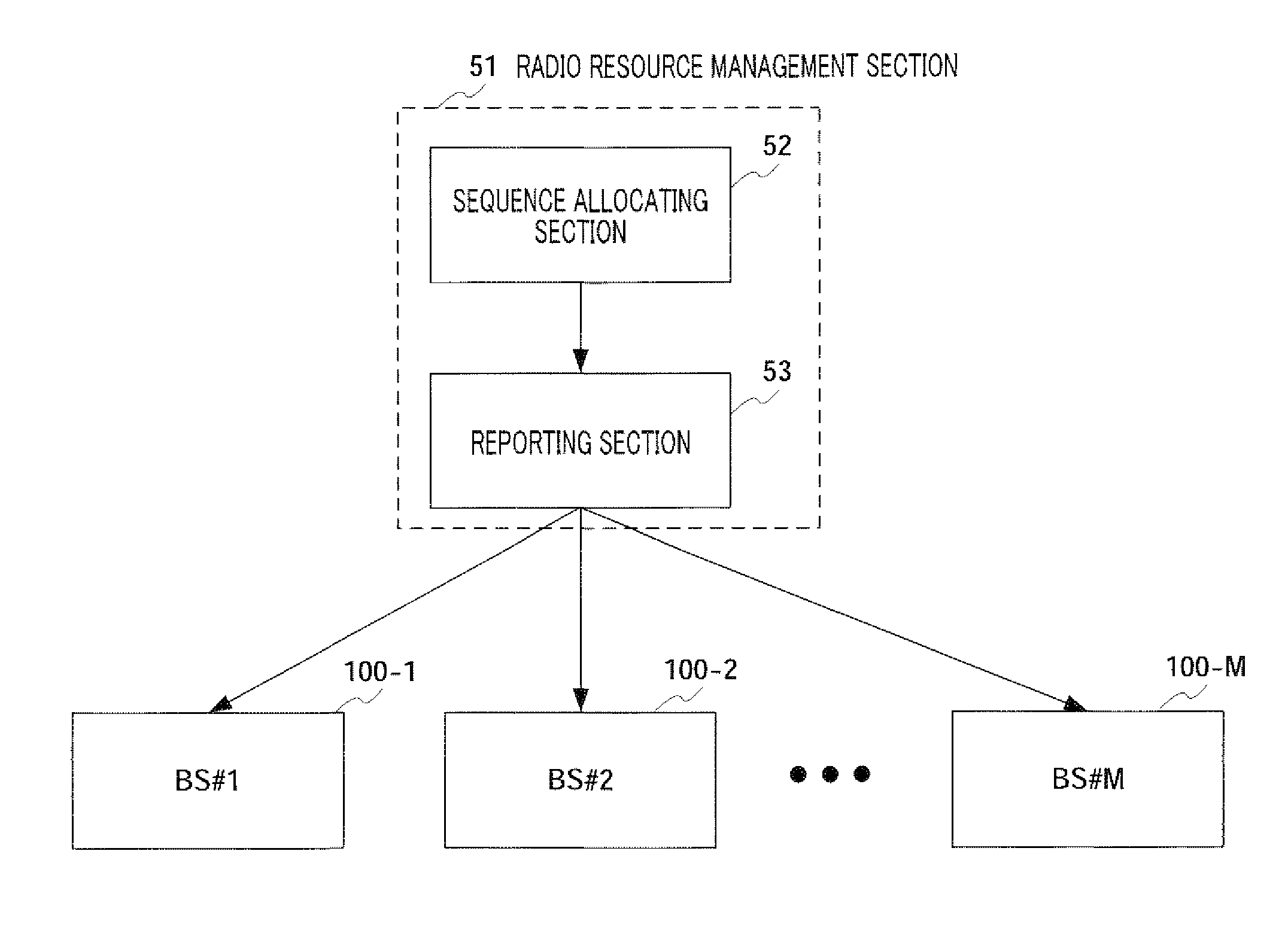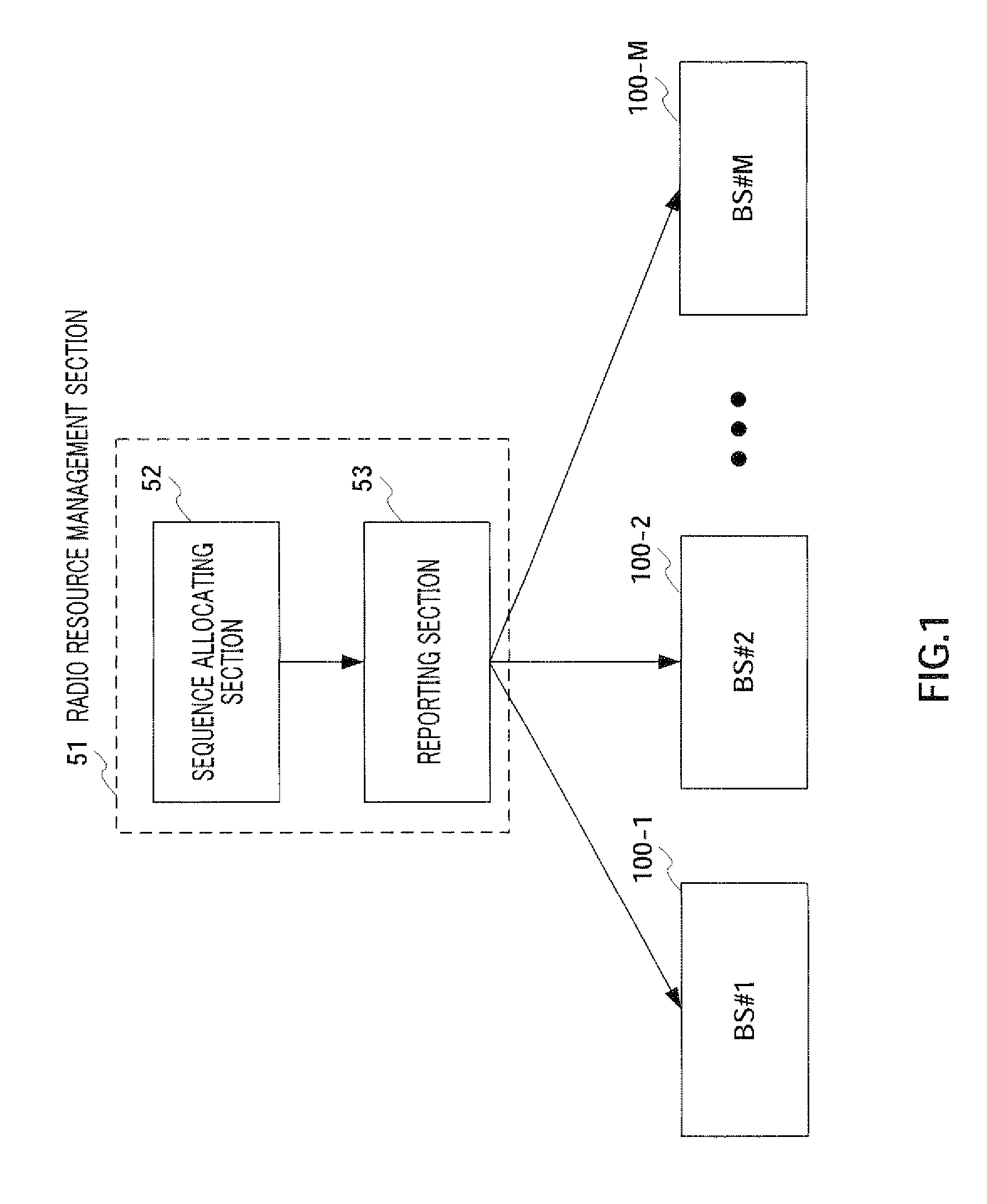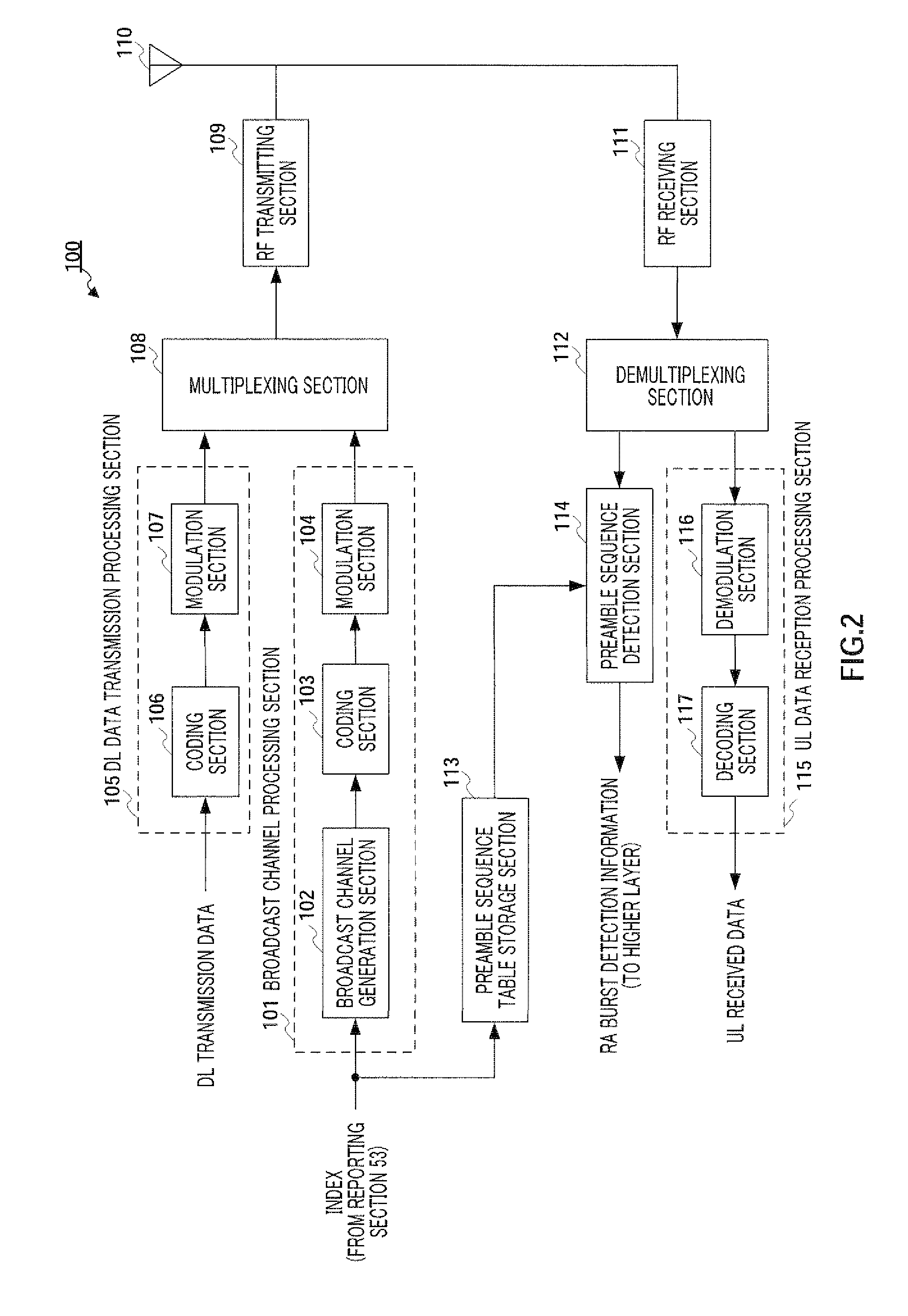Sequence allocating method and sequence allocating apparatus
a sequence allocating and sequence technology, applied in the field of sequence allocating methods and sequence allocating apparatuses, can solve the problems of increasing processing delays, retransmission errors, and retransmission, and achieve the effect of reducing the amount of calculation and circuit scal
- Summary
- Abstract
- Description
- Claims
- Application Information
AI Technical Summary
Benefits of technology
Problems solved by technology
Method used
Image
Examples
embodiment 1
[0032]First, a Zadoff-Chu sequence will be shown using equations. A Zadoff-Chu sequence having a sequence length N is expressed by equation 1 when N is an even number and expressed by equation 2 when N is an odd number.
[1]cr(k)=exp{-j2πrN(k22+qk)}(Equation1)[2]cr(k)=exp{-j2πrN(k(k+1)2+qk)}(Equation2)
where k=0, 1, 2, . . . , N−1, “q” is an arbitrary integer and “r” is a sequence number (sequence index) r is coprime to N and is a positive integer smaller than N.
[0033]Next, a GCL sequence will be shown using equations. A GCL sequence having a sequence length N is expressed by equation 3 when N is an even number and expressed by equation 4 when N is an odd number.
[3]cr,m(k)=exp{-j2πrN(k22+qk)}bi(kmodm)(Equation3)[4]cr,m(k)=exp{-j2πrN(k(k+1)2+qk)}bi(kmodm)(Equation4)
where k=0, 1, 2, . . . , N−1, “q” is an arbitrary integer, “r” is coprime to N and is a positive integer smaller than N, “bi(k mod m)” is an arbitrary complex number and “i”=0, 1, . . . , m−1. Furthermore, when the cross-corr...
embodiment 2
[0086]A case has been explained in Embodiment 1 where preamble sequences are generated and detected in the time domain, and a case will be explained in Embodiment 2 of the present invention where preamble sequences are generated and detected in the frequency domain.
[0087]The UE configuration according to Embodiment 2 of the present invention is similar to that of Embodiment 1 shown in FIG. 3, and will therefore be explained using FIG. 3.
[0088]FIG. 10 is a block diagram showing a configuration of RA burst generating section 162 according to Embodiment 2 of the present invention. In this figure, RA burst generating section 162 is provided with ZC sequence generation section 171, IDFT section 172 and CP adding section 173.
[0089]ZC sequence generation section 171 generates a Zadoff-Chu sequence in the frequency domain and outputs respective coefficients (symbols) of the Zadoff-Chu sequence generated to predetermined subcarriers of IDFT section 172.
[0090]IDFT section 172 applies inverse ...
embodiment 3
[0114]A case will be explained in Embodiment 3 of the present invention where preamble sequences are generated in the time domain and the preamble sequences are detected in the frequency domain.
[0115]Since the configuration of a UE according to Embodiment 3 of the present invention is similar to the configuration of Embodiment 1 shown in FIG. 3, FIG. 3 will be used for explanations thereof.
[0116]FIG. 14 is a block diagram showing a configuration of RA burst generating section 162 according to Embodiment 3 of the present invention. FIG. 14 is different from FIG. 10 in that N-point DFT section 202 is added and ZC sequence generation section 171 is changed to ZC sequence generation section 201.
[0117]ZC sequence generation section 201 generates a Zadoff-Chu sequence in the time domain and outputs each coefficient (symbol) of the generated Zadoff-Chu sequence to N-point DFT section 202.
[0118]N-point DFT section 202 has the same number of points as the sequence length N of the Zadoff-Chu ...
PUM
 Login to View More
Login to View More Abstract
Description
Claims
Application Information
 Login to View More
Login to View More - R&D
- Intellectual Property
- Life Sciences
- Materials
- Tech Scout
- Unparalleled Data Quality
- Higher Quality Content
- 60% Fewer Hallucinations
Browse by: Latest US Patents, China's latest patents, Technical Efficacy Thesaurus, Application Domain, Technology Topic, Popular Technical Reports.
© 2025 PatSnap. All rights reserved.Legal|Privacy policy|Modern Slavery Act Transparency Statement|Sitemap|About US| Contact US: help@patsnap.com



